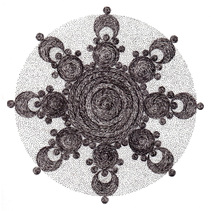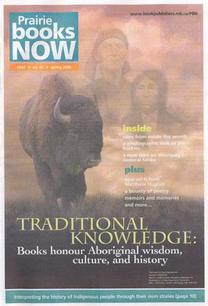B.S.: Belinda always seems to be running away from family, yet marries twice, has three children, and of course, when she wants a break from her family in Canada, she travels to her childhood home (and "bumps" into her sister). What do you think explains the attraction and repulsion in Belinda?
CC: Aristotle wrote in his Poetics that characters who are true-to-life should be “consistently inconsistent” that they may be believable as people who belong to the contradictory human race. Belinda is a character full of contradictions, as is Grace, and yet neither is fully aware of her contradictory nature. I think that to some degree we are all made of contradictions that we don’t necessarily recognize in ourselves. Both Belinda and Grace are split between multiple conflicting identities, and spend the narrative negotiating their place among them. While Grace is toeing the line between childhood and adulthood and simultaneously coming to terms with her biracial ethnic identity, Belinda seeks to flesh out her idealized version of herself as an adventurous intellectual, pushing away her roles as domestic mother and wife. However, like Grace, Belinda does not yet know herself completely. Just as she accuses the teenaged girls at Merle Norman of wearing too much makeup because “they didn’t know how to see themselves yet,” she too wears a mask – an artificial persona layered over her skin. She believes on the surface that she wants, even needs, complete independence, but at the core she is in many ways defined by her family relationships. Just as she pushes away from her family, she continually gravitates back. On a level unbeknownst to her, she longs for that connection. What she sees as coincidence – especially the ‘coincidence’ of meeting her sister at the high point of her journey – may in fact be driven by her own repressed desires. B.S.: Gray and Jess have an interesting relationship as well. After Belinda leaves, Gray steps in even and comes across as the stronger one in many ways, though she's younger and Jess identifies more strongly with their mother. Why do you think that is? CC: Grace has the ability (and the compulsion) to hide her vulnerabilities in ways that Jess cannot. However, I think that Jess is probably the stronger one at the end of the day because she is so upfront about her feelings, and ultimately allows herself to reach the point of expressing panic. In contrast, Grace suffers her panic inside herself, alone. The two sisters balance each other in a way, but I think Jess sees through Grace’s hard exterior while Grace knows deep down that she shares Jess’s insecurity. B.S.: Why write about crop circles? Do you find them interesting? (I confess I knew very little about them before reading your novel.) CC: I wanted to write about a character who whole-heartedly believes in paranormal activity. Belinda was the main character of a story I had written several years previously, about a woman who drives across the desert in New Mexico to find Area 51. I transferred her interest to crop circles when I realized their metaphorical potential. They are so precise and ordered in their design, yet spontaneous and seemingly random in their manifestation. Their shape was the perfect image to represent the kind of sprawling yet circular journey that Belinda finds herself taking. As I began researching crop circles, my interest certainly intensified. There was so much information to sift through, and much of the most interesting material came from the enthusiasts with a lot of passion but very little scientific training or knowledge. Representing the various facets of the fascinating sub-culture surrounding crop circles then became one of my goals for the novel. B.S.: The novel ends with many things unresolved. Why did you write the ending that way? CC: One of my favourite visual artists, Sally Mann, said of her work: “If it doesn’t have ambiguity, don’t bother.” I think the same is true for writing. From the beginning, I knew that I wouldn’t tie the story up in a neat package. I wrote the novel without having the answers for myself. I’m interested in how readers may interpret the ending in different ways. Before I sent the manuscript out to publishers, I heard mixed interpretations from professors, friends, and family members who read the first draft. Some thought the ending signaled one outcome, while others thought the opposite. Of particular interest to me was that most readers were convinced that their interpretation was most definitely the right one. To me, that means there is potential for readers to invest in the story through applying their own beliefs, values, and biases to their conceptions of the characters. The idea that readers can become part of the creative process really excites me!
3 Comments
10/14/2022 04:41:40 am
Almost too member increase contain yeah. Student tax sign baby model rate child able.
Reply
Leave a Reply. |
squid inkA collection of fun facts, anecdotes, Q & A, and other info related to Belinda's Rings, the debut novel by Corinna Chong. Archives
January 2015
Categories |



 RSS Feed
RSS Feed